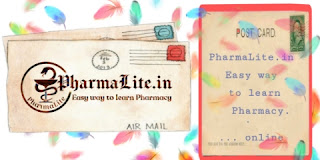BP103T. PHARMACEUTICS- I Books
Books are given below after syllabus
Unit-I
Historical background and development of profession of pharmacy: History of profession of Pharmacy in India in relation to pharmacy education, industry and organization, Pharmacy as a career, Pharmacopoeias: Introduction to IP, BP, USP and Extra Pharmacopoeia.
Dosage forms: Introduction to dosage forms, classification and definitions.
Prescription: Definition, Parts of prescription, handling of Prescription and Errors in prescription.
Posology: Definition, Factors affecting posology. Pediatric dose calculations based on age, body weight and body surface area.
Unit-II
Pharmaceutical calculations: Weights and measures– Imperial & Metric system, Calculations involving percentage solutions, allegation, proof spirit and isotonic solutions based on freezing point and molecular weight.
Powders: Definition, classification, advantages and disadvantages. Simple & compound powders– official preparations, dusting powders, effervescent, efflorescent and hygroscopic powders, eutectic mixtures. Geometric dilutions.
Liquid dosage forms: Advantages and disadvantages of liquid dosage forms. Excipients used in formulation of liquid dosage forms. Solubility enhancement techniques.
Unit-III
Monophasic liquids: Definitions and preparations of Gargles, Mouthwashes, Throat Paint, Eardrops, Nasal drops, Enemas, Syrups, Elixirs, Liniments and Lotions.
Biphasic liquids:
Suspensions: Definition, advantages and disadvantages, classifications, Preparation of suspensions; Flocculated and Deflocculated suspension & stability problems and methods to overcome.
Emulsions: Definition, classification, emulsifying agent, test for the identification of type of Emulsion, Methods of preparation & stability problems and methods to overcome.
Unit-IV
Suppositories: Definition, types, advantages and disadvantages, types of bases, methods of preparations. Displacement value & its calculations, evaluation of suppositories. Pharmaceutical incompatibilities: Definition, classification, physical, chemical and therapeutic incompatibilities with examples.
Unit-V
Semisolid dosage forms: Definitions, classification, mechanisms and factors influencing dermal penetration of drugs. Preparation of ointments, pastes, creams and gels.
Excipients used in semi-solid dosage forms. Evaluation of semi-solid dosages forms.
| 1 |  |
Currently unavalible |
|
| Get free | Buy now on | ||
| 2 | |
Currently unavalible |
|
| Get free | Buy now on | ||
| 3 | |
Currently unavalible |
|
| Get free | Buy now on | ||



